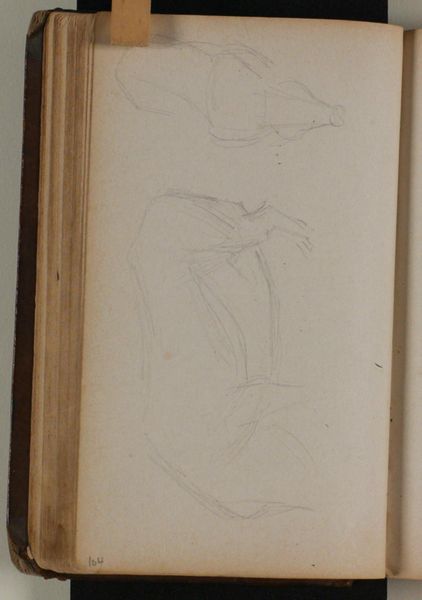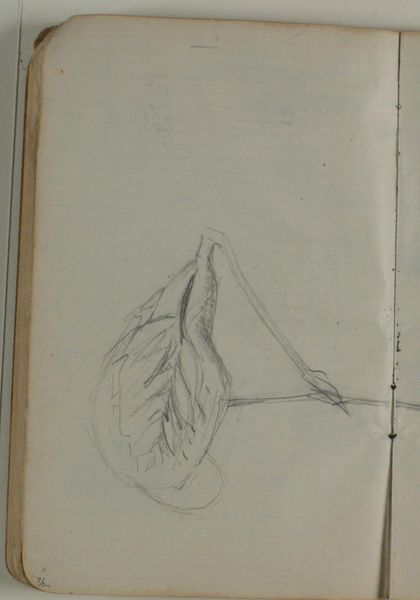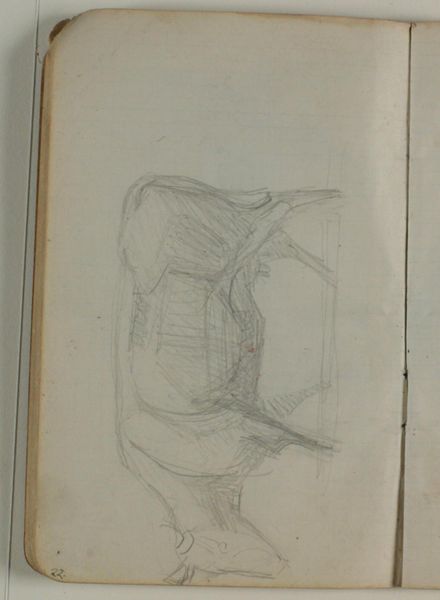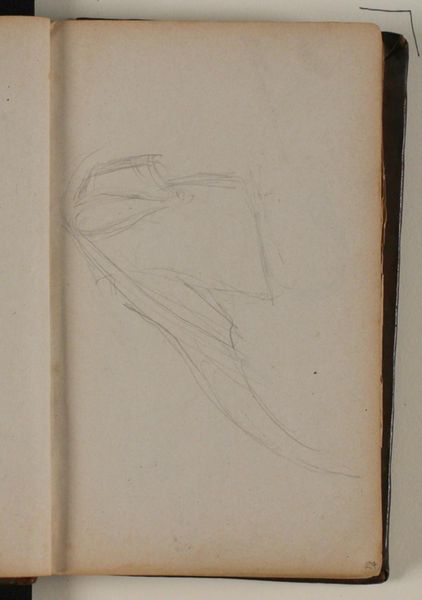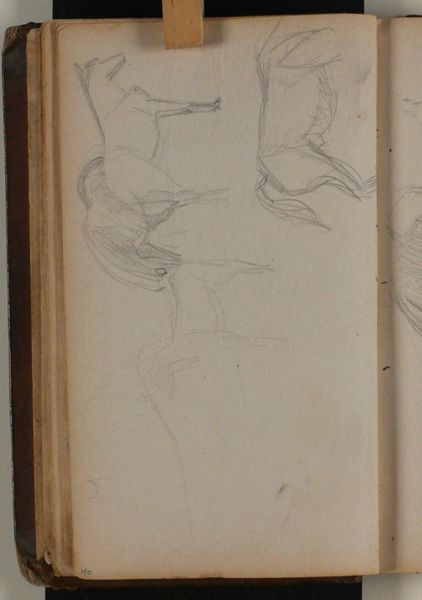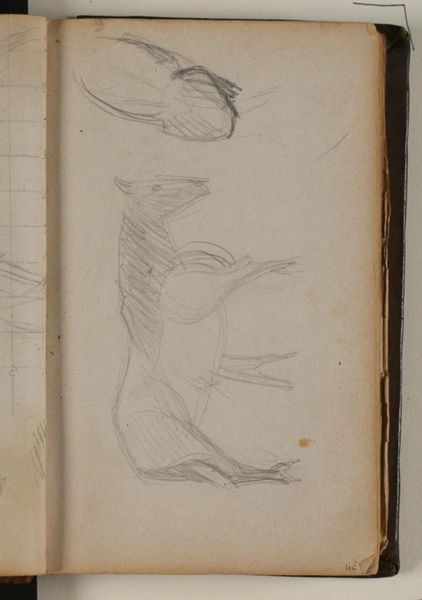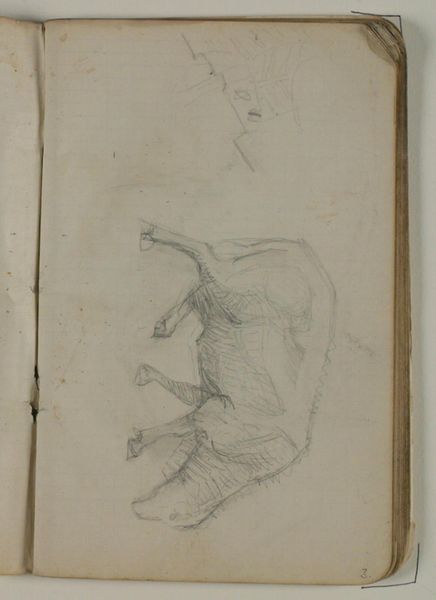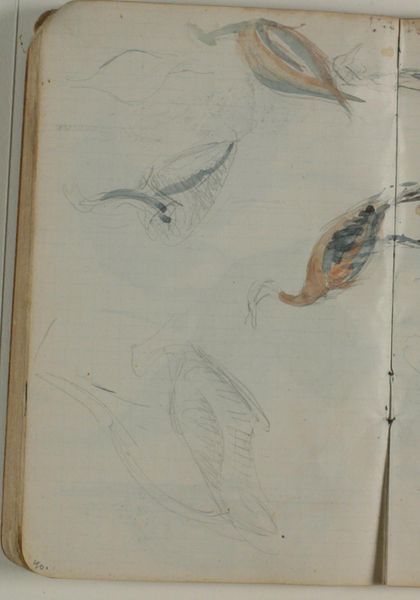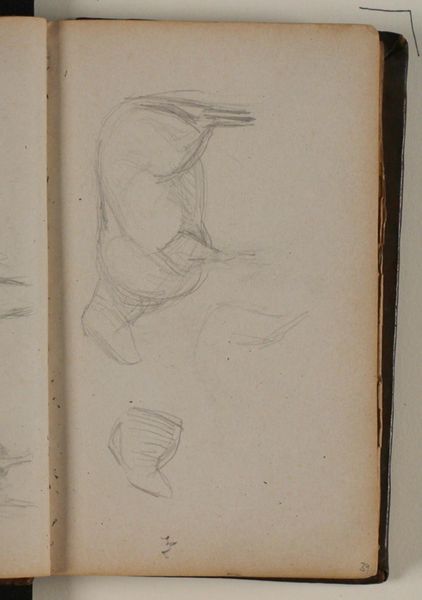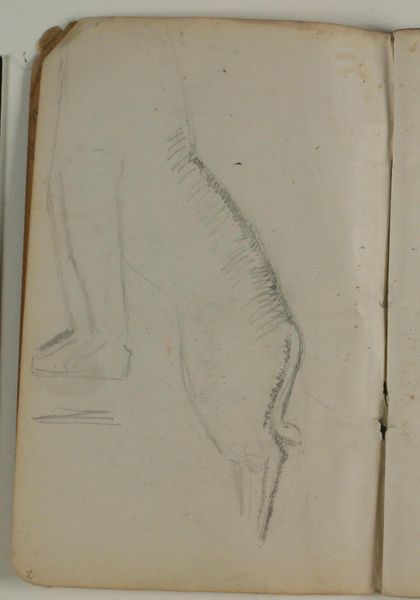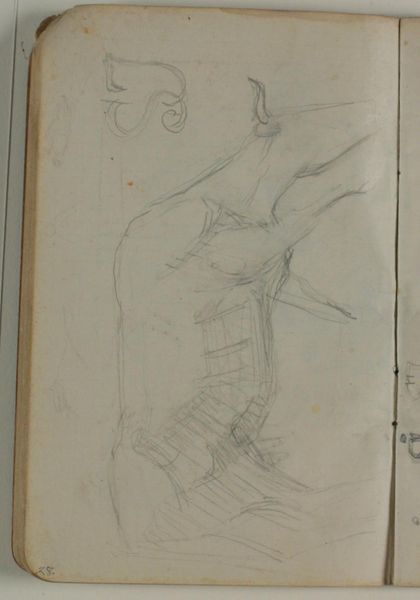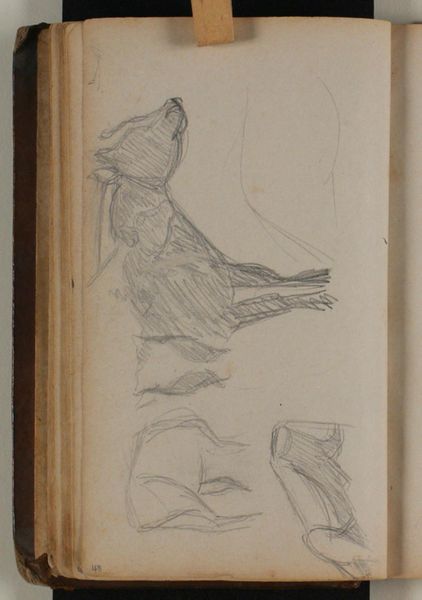
Dimensions: 175 mm (height) x 118 mm (width) x 6 mm (depth) (monteringsmaal), 175 mm (height) x 110 mm (width) (bladmaal)
Curator: Niels Larsen Stevns created this piece, "Skitse af ko. Adresse," a pencil drawing on paper, sometime between 1900 and 1905. Editor: It looks like a study—delicate and fleeting, captured within the pages of what appears to be a sketchbook. I get a strong sense of place; the Danish countryside, perhaps? Curator: Precisely. Stevns was deeply invested in portraying the rural landscape. One could examine this within the framework of Realism, situating it against the backdrop of shifting agricultural practices and the social realities of rural life during this period. Editor: You know, when looking at the cow itself, I am struck by how simplified it is. Barely there, you might say. The animal doesn’t carry any hint of Romanticism, but nor is there any trace of critical, social awareness; it is what it is. But is this, perhaps, the intention? Does the drawing allow the subject to be, instead of standing as an anthropomorphic device? Curator: That’s interesting, considering the period. The rural often served as a battleground for conflicting ideologies and social movements. Consider the role gender plays. Who typically tended to these animals? How did such labor shape the lived experience? I am curious whether Stevns’ artistic practice consciously attempted to address or avoid these aspects. Editor: I agree. He was likely very aware of his positioning as an artist, but I still wonder if we risk placing more meaning onto it than exists? Couldn’t it simply be about the act of seeing? A genuine attempt to capture a fleeting moment of beauty and maybe even a bit of poetry on paper? Curator: Well, the question then becomes, how do we disentangle that so-called “act of seeing” from its socio-political dimensions? Can we separate individual perception from the dominant modes of representation prevalent during this historical period? Even claiming the lack of symbolism in art may hold symbolic meaning, by either going against or agreeing with artistic social norms of its time. Editor: It certainly offers food for thought on the role of realism and naturalism as political statements, doesn’t it? Curator: Yes, the social construction of landscape and rurality makes "Skitse af ko" a wonderful object of contemplation.
Comments
No comments
Be the first to comment and join the conversation on the ultimate creative platform.
